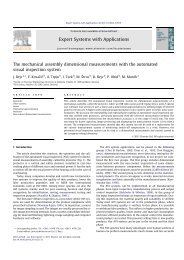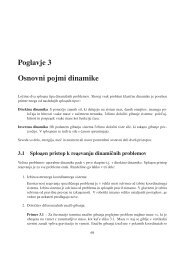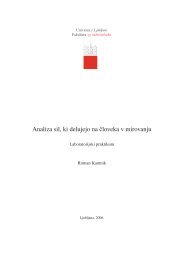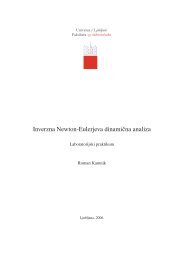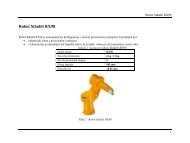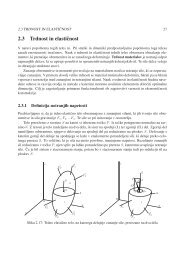ARM Processor Instruction Set
ARM Processor Instruction Set
ARM Processor Instruction Set
You also want an ePaper? Increase the reach of your titles
YUMPU automatically turns print PDFs into web optimized ePapers that Google loves.
<strong>ARM</strong> <strong>Processor</strong> <strong>Instruction</strong> <strong>Set</strong><br />
5.6 Multiply and multiply-accumulate (MUL, MLA)<br />
The instruction is only executed if the condition is true. The various conditions are<br />
defined at the beginning of this chapter. The instruction encoding is shown in<br />
➲Figure 5-13: Multiply instructions.<br />
The multiply and multiply-accumulate instructions use a 2-bit Booth’s algorithm to<br />
perform integer multiplication. They give the least significant 32-bits of the product of<br />
two 32-bit operands, and may be used to synthesize higher-precision multiplications.<br />
31 28 27<br />
22 21 20 19 16 15 12 11 8 7<br />
4 3<br />
Cond 0 0 0 0 0 0 A S Rd Rn Rs 1 0 0 1 Rm<br />
0<br />
Preliminary - Unrestricted<br />
Figure 5-13: Multiply instructions<br />
The multiply form of the instruction gives Rd:=Rm*Rs. Rn is ignored, and should be<br />
set to zero for compatibility with possible future upgrades to the instruction set.<br />
The multiply-accumulate form gives Rd:=Rm*Rs+Rn, which can save an explicit ADD<br />
instruction in some circumstances.<br />
The results of a signed multiply and of an unsigned multiply of 32-bit operands differ<br />
only in the upper 32 bits; the low 32 bits of the signed and unsigned results are<br />
identical. As these instructions only produce the low 32 bits of a multiply, they can be<br />
used for both signed and unsigned multiplies.<br />
Example<br />
For example consider the multiplication of the operands:<br />
Operand registers<br />
Destination register<br />
<strong>Set</strong> condition code<br />
0 = do not alter condition codes<br />
1 = set condition codes<br />
Accumulate<br />
0 = multiply only<br />
1 = multiply and accumulate<br />
Condition Field<br />
Operand A Operand B Result<br />
0xFFFFFFF6 0x00000014 0xFFFFFF38<br />
If the operands are interpreted as signed, operand A has the value -10, operand B has<br />
the value 20, and the result is -200 which is correctly represented as 0xFFFFFF38<br />
If the operands are interpreted as unsigned, operand A has the value 4294967286,<br />
operand B has the value 20 and the result is 85899345720, which is represented as<br />
0x13FFFFFF38, so the least significant 32 bits are 0xFFFFFF38.<br />
5-20<br />
<strong>ARM</strong>7500 Data Sheet<br />
<strong>ARM</strong> DDI 0050C



